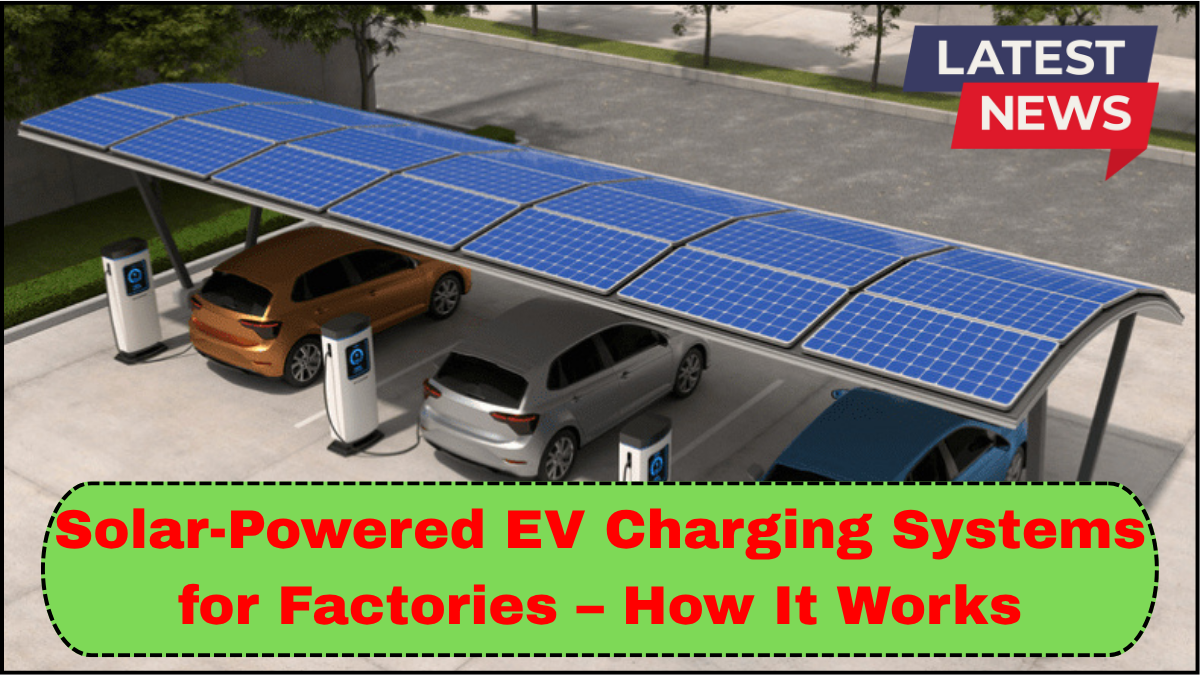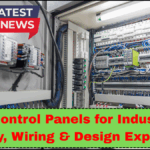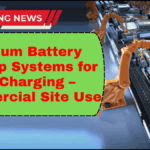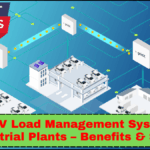As electric vehicles (EVs) gain traction across the globe, industrial facilities are shifting gears to support the electrification of their operations. One of the smartest moves a factory can make today is integrating solar-powered EV chargers into its infrastructure. This not only reduces operational costs but also supports sustainability goals and energy independence. Here’s a deep dive into how solar-powered EV charging systems function in a factory setting, and why hybrid infrastructure is key to long-term success.

How Do Solar-Powered EV Charging Systems Work?
At the core, a solar-powered EV charging system captures sunlight through photovoltaic (PV) panels, converts it into electrical energy, and stores or supplies this energy directly to electric vehicles. But in a factory setup, things work on a more advanced scale.
-
Solar PV Array Installation
-
Panels are installed on rooftops, carports, or adjacent land spaces.
-
The system size depends on the factory’s energy consumption and the number of EVs needing charging.
-
Industrial-grade PV arrays often produce anywhere from 100 kW to multiple megawatts.
-
-
Inverter Conversion
-
The direct current (DC) generated by solar panels is converted into alternating current (AC) using inverters.
-
These industrial inverters are designed for high loads, allowing multiple EV chargers to operate simultaneously without bottlenecks.
-
-
Energy Management System (EMS)
-
A smart EMS controls when and how much energy goes into charging EVs.
-
It prioritizes solar power and shifts to backup or grid energy only when necessary.
-
Peak shaving, load balancing, and demand response are commonly built into these systems to optimize performance.
-
-
EV Chargers
-
High-speed DC chargers or Level 2 AC chargers are typically installed depending on the types of vehicles used (fleet vans, trucks, employee cars, etc.).
-
Chargers are usually connected to an app or dashboard for real-time usage monitoring and scheduling.
-
Integrating Hybrid Infrastructure for Maximum Efficiency
Relying solely on solar power isn’t always practical—especially in areas with variable weather or high operational demands. That’s where hybrid infra comes into play.
A hybrid infrastructure combines solar energy with grid power and/or battery storage to ensure consistent EV charging availability. Here’s how it works:
-
Grid-Tied Backup: When solar output is low, the system automatically draws power from the grid.
-
Battery Storage: Excess solar energy is stored in large-scale batteries for use during non-peak sunlight hours or power outages.
-
Load Optimization: Smart controls distribute power between solar, grid, and battery sources based on cost-efficiency and availability.
This combination ensures that EV charging remains uninterrupted while maximizing solar utilization.
Key Benefits for Factories
-
Lower Operating Costs: Factories can offset a significant portion of their electricity bills by producing their own charging power.
-
Sustainability Compliance: Reduces carbon emissions and aligns with ESG goals and green certifications.
-
Energy Resilience: In hybrid setups, factories are less vulnerable to grid outages or price spikes.
-
Scalable Solutions: Solar-powered EV charging systems can grow with the factory’s fleet and energy demands.
Real-World Example
An automotive parts factory in Texas installed a 1.2 MW solar system paired with 50 EV chargers and battery storage. The result: a 60% reduction in energy costs, full EV fleet support, and a 10-year ROI. This example highlights the practical and financial sense of adopting solar-powered EV chargers at scale.
Challenges and Considerations
-
Initial Investment: High upfront costs for solar panels, inverters, and charging infrastructure.
-
Space Requirements: Sufficient rooftop or land area is needed for solar panel installation.
-
Maintenance: Although minimal, solar systems and EV chargers require periodic checks and cleaning to maintain efficiency.
These are manageable hurdles when weighed against the long-term benefits.
Frequently Asked Questions
Q1: Can a factory completely disconnect from the grid with solar-powered EV chargers?
A: While technically possible, it’s not practical for most factories due to variability in solar production. A hybrid infra approach provides better reliability.
Q2: What type of EV chargers are ideal for industrial use?
A: High-speed DC fast chargers are preferred for commercial fleets, while Level 2 chargers work well for employee vehicles.
Q3: How long does it take to install a solar-powered EV charging system?
A: Depending on the size, installation can take between a few weeks to several months, including design, permitting, and setup.
Q4: Are government incentives available for installing solar-powered EV charging systems?
A: Yes. Many regions offer tax credits, rebates, and grants to support renewable energy projects in the industrial sector.
click here to learn more



